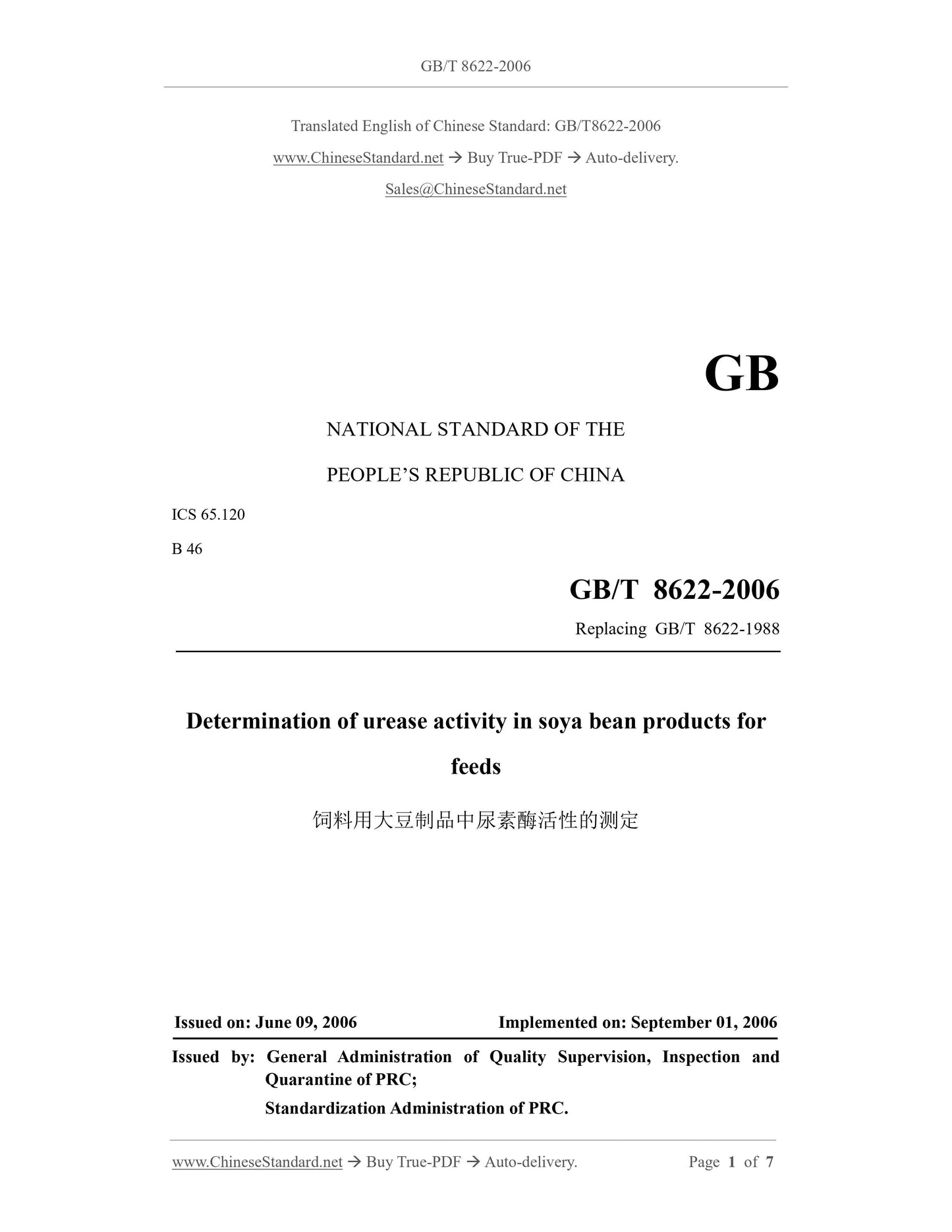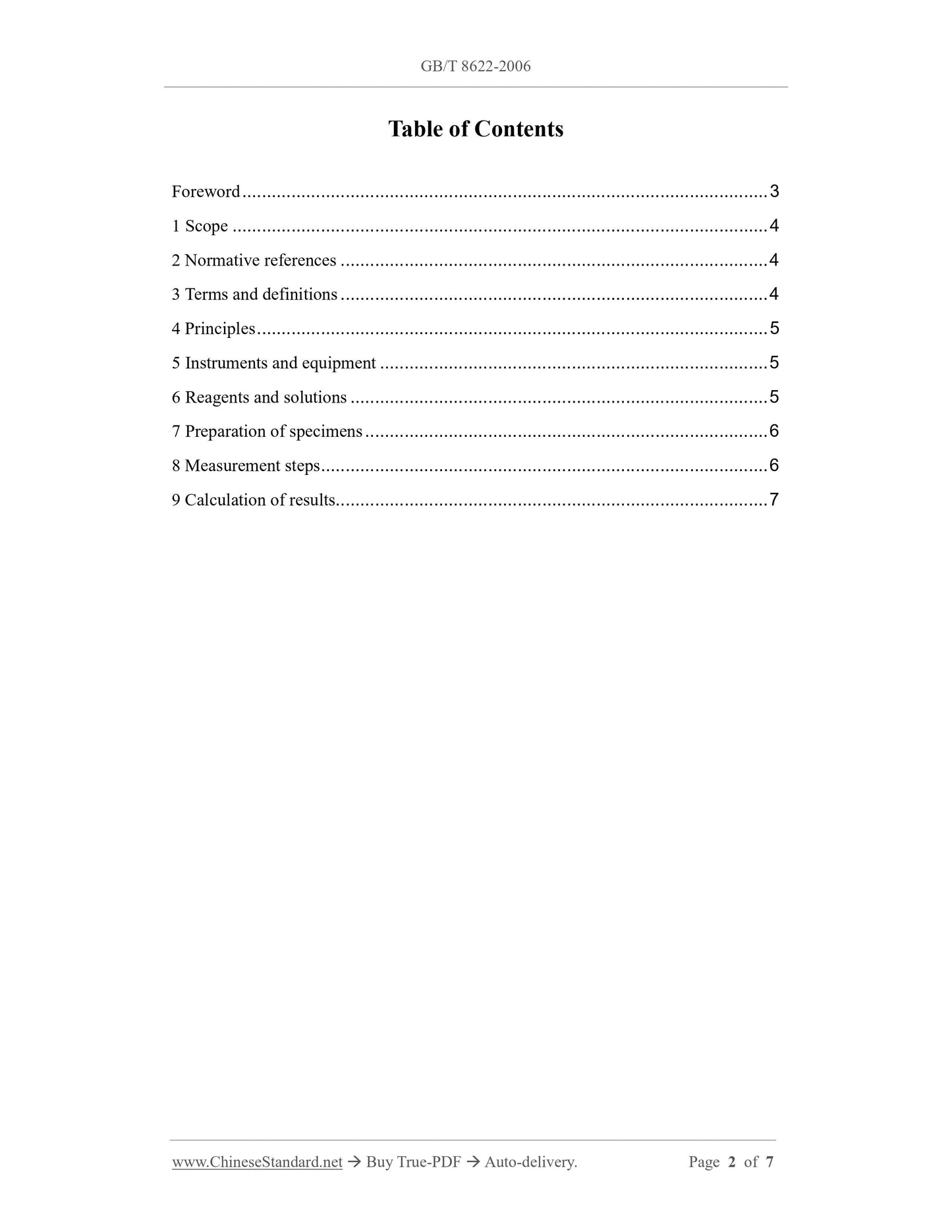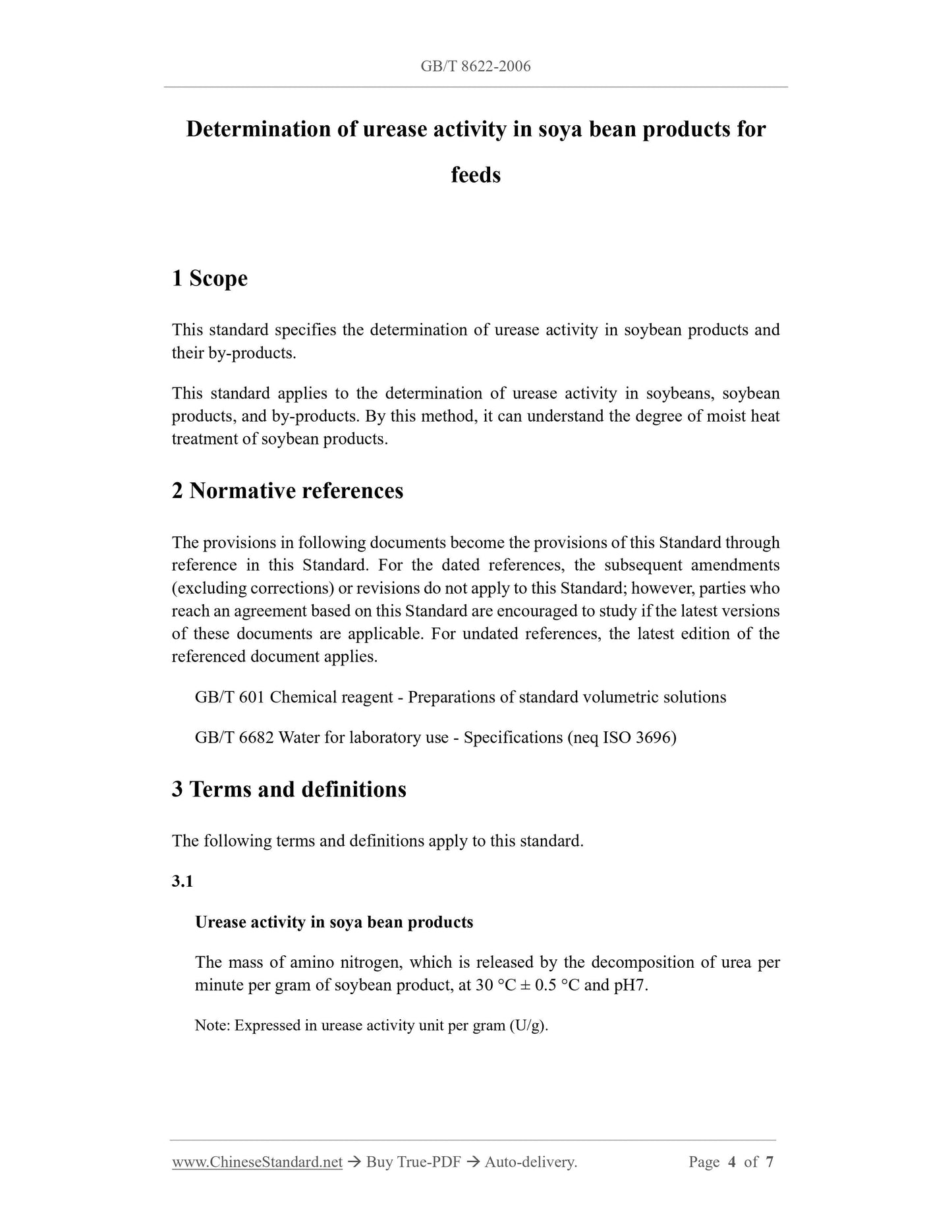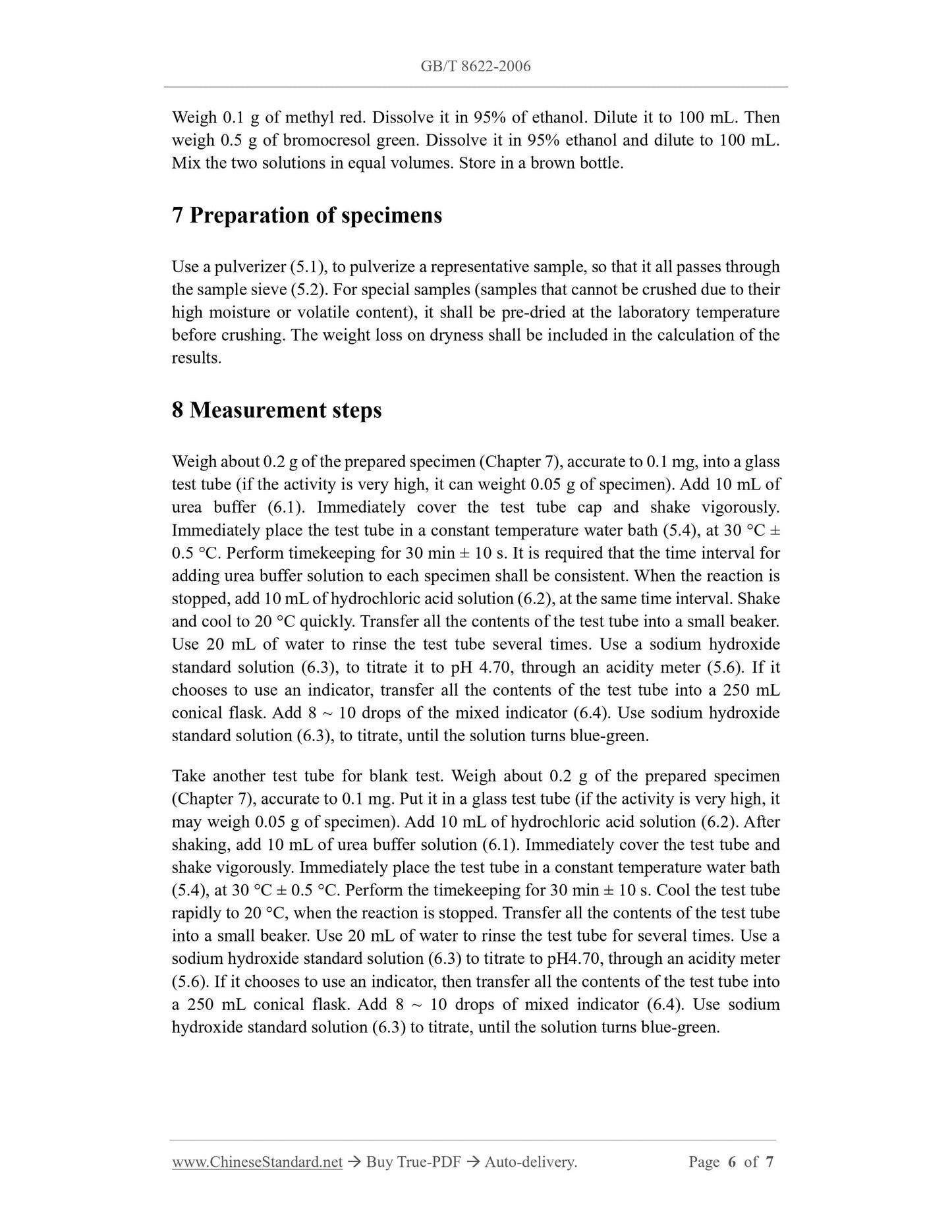1
/
of
4
www.ChineseStandard.us -- Field Test Asia Pte. Ltd.
GB/T 8622-2006 English PDF (GB/T8622-2006)
GB/T 8622-2006 English PDF (GB/T8622-2006)
Regular price
$125.00
Regular price
Sale price
$125.00
Unit price
/
per
Shipping calculated at checkout.
Couldn't load pickup availability
GB/T 8622-2006: Determination of urease activity in soya bean products for feeds
Delivery: 9 seconds. Download (and Email) true-PDF + Invoice.Get Quotation: Click GB/T 8622-2006 (Self-service in 1-minute)
Newer / historical versions: GB/T 8622-2006
Preview True-PDF
Scope
This standard specifies the determination of urease activity in soybean products andtheir by-products.
This standard applies to the determination of urease activity in soybeans, soybean
products, and by-products. By this method, it can understand the degree of moist heat
treatment of soybean products.
Basic Data
| Standard ID | GB/T 8622-2006 (GB/T8622-2006) |
| Description (Translated English) | Determination of urease activity in soya bean products for feeds |
| Sector / Industry | National Standard (Recommended) |
| Classification of Chinese Standard | B46 |
| Classification of International Standard | 65.120 |
| Word Count Estimation | 6,671 |
| Date of Issue | 2006-06-09 |
| Date of Implementation | 2006-09-01 |
| Older Standard (superseded by this standard) | GB/T 8622-1988 |
| Quoted Standard | GB/T 601; GB/T 6682 |
| Regulation (derived from) | National Standard Approval Announcement 2006 No.8 (Total No.95) |
| Issuing agency(ies) | General Administration of Quality Supervision, Inspection and Quarantine of the People's Republic of China, Standardization Administration of the People's Republic of China |
| Summary | This standard specifies the soybean and its byproducts in the activity measurement of urea. This standard applies to soybeans, products and by-products-Determination of urease activity was obtained from soybeans. This method can understand the degree heat treated soybean products. |
Share







